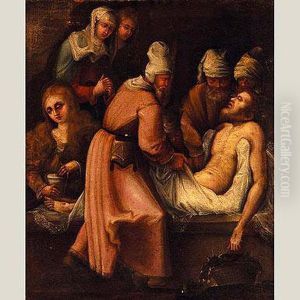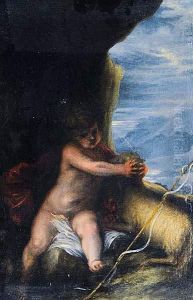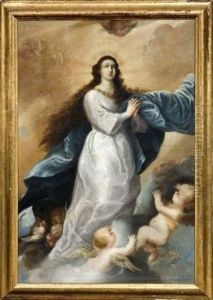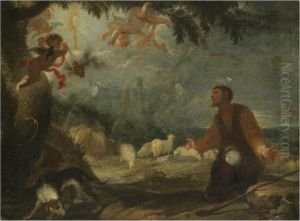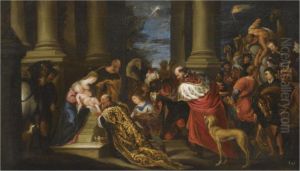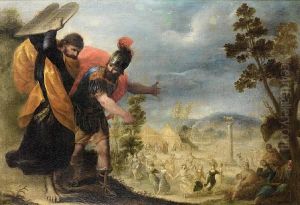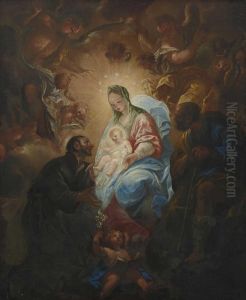Juan Antonio De Frias Y Escalante Paintings
Juan Antonio de Frías y Escalante was a Spanish Baroque painter, born in Córdoba, Spain, in 1633. His work primarily focused on religious themes, reflecting the intense spiritual fervor of Spain during the 17th century. He is particularly noted for his mastery in the use of color and the dramatic intensity of his religious compositions. Despite his relatively short life, dying at the age of 36 in Madrid in 1669, Escalante left behind a body of work that continues to be admired for its emotional depth and technical proficiency.
Escalante's training and early career are not extensively documented, but it is known that he was influenced by the works of his contemporaries in the Spanish school of painting, such as Francisco de Zurbarán and Bartolomé Esteban Murillo. His style is characterized by a strong chiaroscuro, the realistic depiction of figures, and a vivid color palette that adds a sense of vitality to his paintings. Escalante's religious works often depict scenes from the New Testament, imbuing them with a humane and compassionate portrayal of biblical characters, which was a hallmark of the Spanish Baroque period.
Despite his talent and the quality of his work, Juan Antonio de Frías y Escalante did not gain the same level of fame as some of his contemporaries. However, in recent years, there has been a renewed interest in his contributions to Spanish art, recognizing him as an important figure in the development of Baroque painting in Spain. His works are preserved in several major museums and collections, where they continue to be studied and appreciated for their artistic and historical significance.
